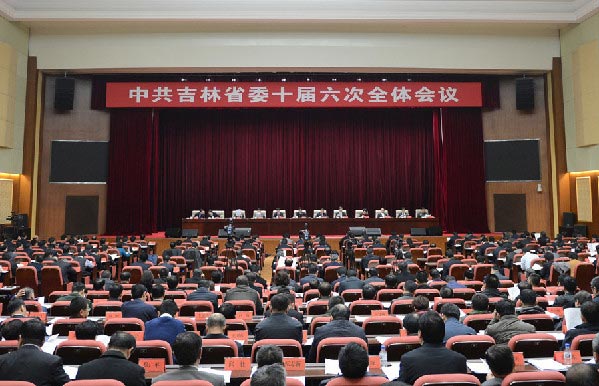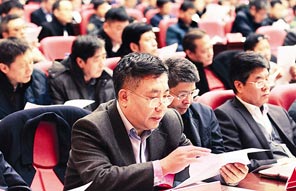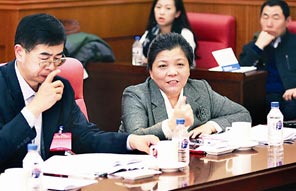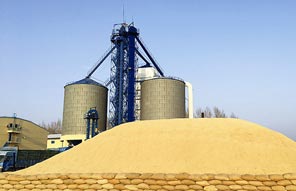Where is NE China headed in the next five years?
2015-11-26
Where is NE China headed in the next five years?
The 10th Jilin Provincial Party Committee held its 6th plenary session in the city of Changchun, Nov 24 - 25, at a time when Jilin comes to the end of the 12th Five-year Plan (2011-2015), and is approving the 13th Five-year Plan (2016-2020) for provincial social and economic development with the emphasis on innovation, coordination, and opening up.
To some extent, this will determine the direction of provincial reforms and development over the next five years, so the Party Secretary, Bayin Chaolu, speaking on behalf of the Standing Committee, discussed the work, major issues, and comprehensive reforms.
Taking part in the session were 56 members and seven alternate members.
 |
|
The 10th Jilin provincial Party meeting, in Changchun, Nov 24 - 25. [Photo/chinajilin.com.cn] |
What will NE China do in the next five years?
Jilin GDP
The province's GDP is forecast to maintain 5-percent growth over the next five years, with An Guiwu, head of the provincial development and reform commission, commenting,
"It's a very pragmatic and rational forecast with the pace of growth adjusting downward from high-speed to mid-to-high speed over the next five years. It also shows our determination to rejuvenate the traditional heavy industries."
More opening-up
The province will put greater emphasis on the Changchun-Jilin-Tumen Pilot Development Zone, which is significant for the opening of border areas and international cooperation in NE Asia.
Gao Yulong, Party secretary of the city of Hunchun, speaking about border cities benefiting from the policy by saying,
"We're pushing forward with infrastructure construction in railways, harbors, airports, and bridges and we’re working closely with other cities to develop the Pilot Zone."
Innovation
This requires emancipating our minds and thinking in a new way and, in addressing this, Zhao Qianghua, head of Jilin expo affairs, suggests that Jilin should borrow from other provinces' experiences by noting,
"We're already all using Wechat [China's version of twitter] to share information, with southerners talking about financing and startups, while we[Northerners] prefer talking about how to keep healthy, though we talk big about innovation, but have no idea how to do. Why not put ourselves in their shoes? After all, we do need something new."
Reform
This calls for pilot programs in major areas applied at a modest pace, so, Su Heng, deputy general secretary of the Jilin government, in explaining this, proposes going further with administrative reforms and says,
"During the 13th Five-year Plan, we'll continue streamlining administrations, decentralizing institutes, increasing government capacity to govern, and stimulating markets."
Industrial transformation
Jilin will improve its major heavy industries such as automobiles, petrochemicals, and agriculture and will pay closer attention to equipment manufacturing, construction, tourism and health care for the foreseeable future and, in addressing this, Li Guoqiang, head of the Jilin grain bureau, talks about how to modernize in this agriculture-heavy province by saying,
"We're encouraging cooperatives, farms, and individual households to get involved in planting and we're pushing mechanization for greater efficiency."
Related Reports
 |
 |
 |
|
Delegates at the 10th Jilin Party Committee getting a work report. [Photo by Shi Lei/chinajilin.com.cn] |
Delegates discussing the 13th Five-Year Plan and social and economic development in Jilin. [Photo by Shi Lei/chinajilin.com.cn] |
NE China wants to increase grain production |
